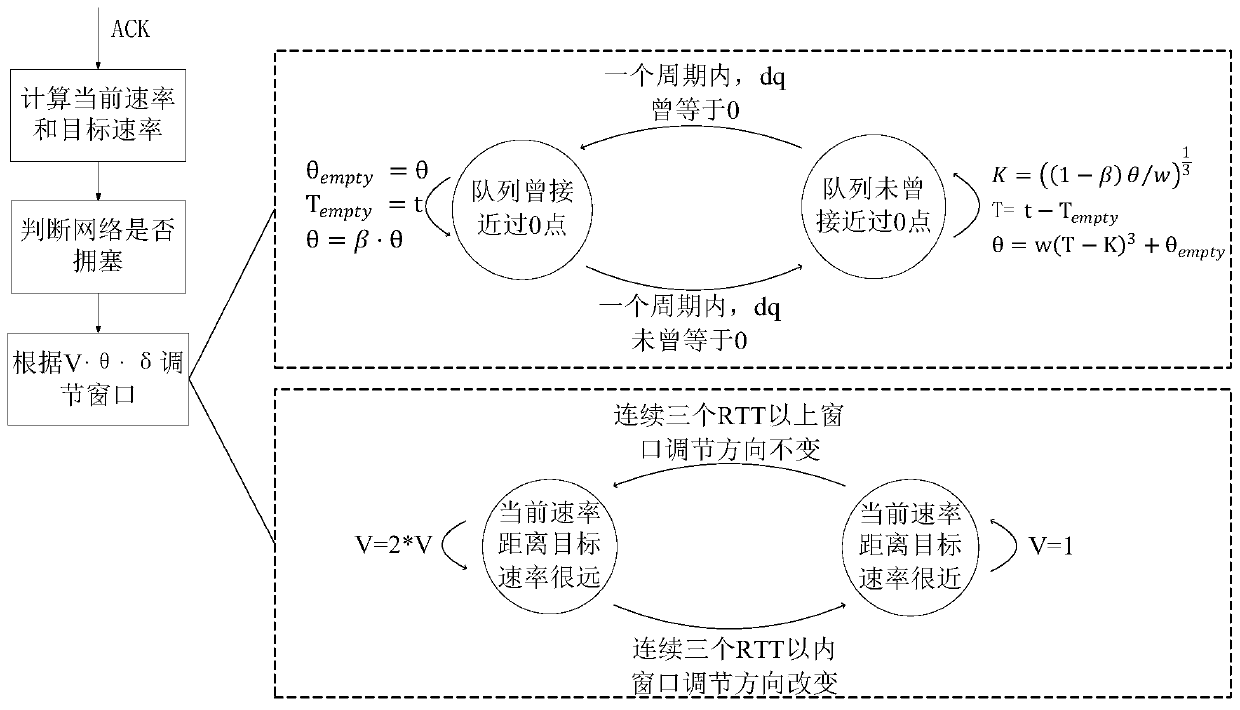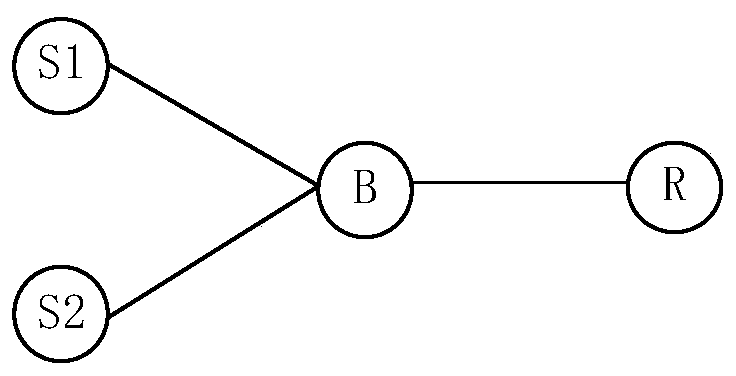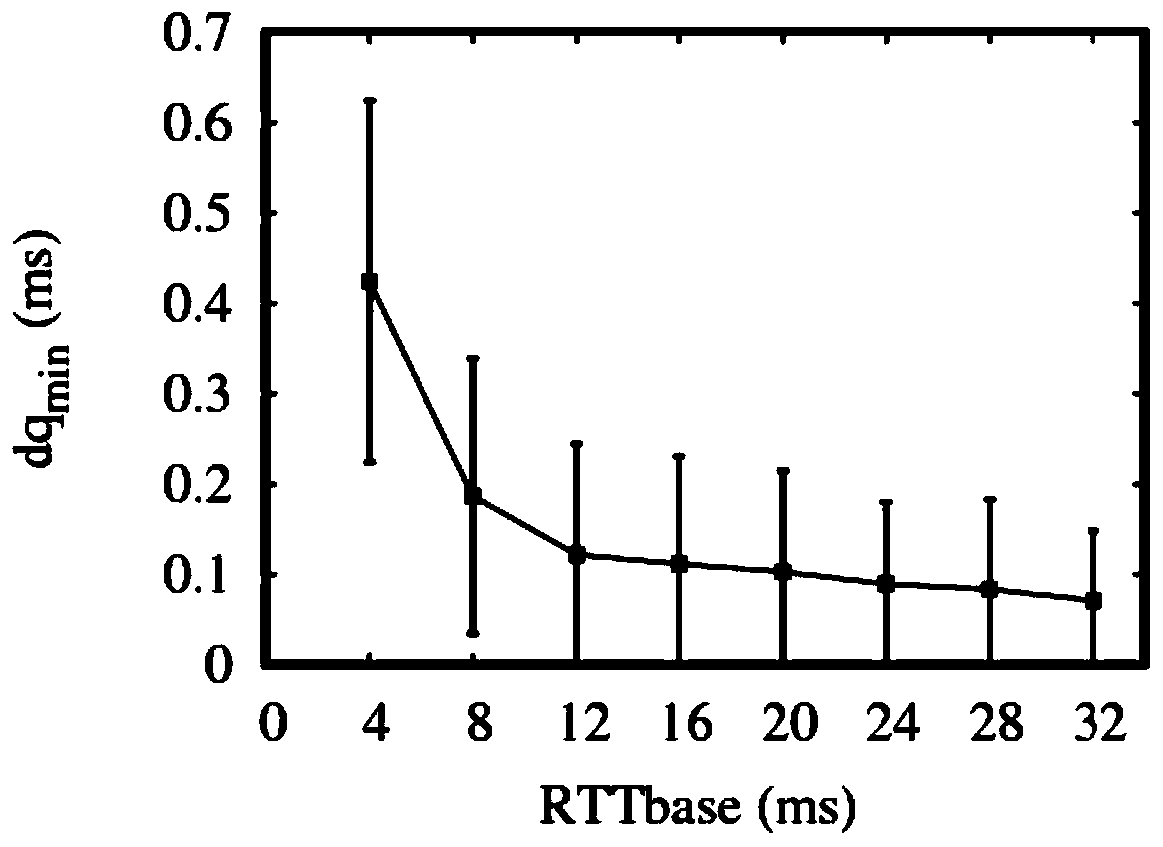Adaptive congestion control method based on delay
A congestion control and self-adaptive technology, which is applied in digital transmission systems, data exchange networks, electrical components, etc., can solve the problem that the minimum value point cannot be close to 0, so as to avoid excessive window adjustment, good fairness, The effect of low latency
- Summary
- Abstract
- Description
- Claims
- Application Information
AI Technical Summary
Problems solved by technology
Method used
Image
Examples
Embodiment Construction
[0074] The specific embodiment of the present invention is described in further detail below in conjunction with accompanying drawing:
[0075] figure 1 It is the overall frame diagram of Adaptive-Copa, a delay-based adaptive congestion control method. First, the current rate is calculated according to the ratio of the window and the round-trip delay, and then the target rate is calculated according to the preset parameter δ and the ratio of the queuing delay. Finally, the current rate is compared and the target rate to determine whether the network is congested. When it is judged that the network is congested, the congestion window is adjusted according to V*θ*δ. The operation steps are as follows:
[0076] Step 1, each time the sender receives an ACK packet, it adjusts the congestion window cwnd by the following formula:
[0077]
[0078] Among them, cwnd' is a new congestion window calculated according to the current congestion window cwnd, δ is a parameter that ...
PUM
 Login to View More
Login to View More Abstract
Description
Claims
Application Information
 Login to View More
Login to View More - R&D
- Intellectual Property
- Life Sciences
- Materials
- Tech Scout
- Unparalleled Data Quality
- Higher Quality Content
- 60% Fewer Hallucinations
Browse by: Latest US Patents, China's latest patents, Technical Efficacy Thesaurus, Application Domain, Technology Topic, Popular Technical Reports.
© 2025 PatSnap. All rights reserved.Legal|Privacy policy|Modern Slavery Act Transparency Statement|Sitemap|About US| Contact US: help@patsnap.com



